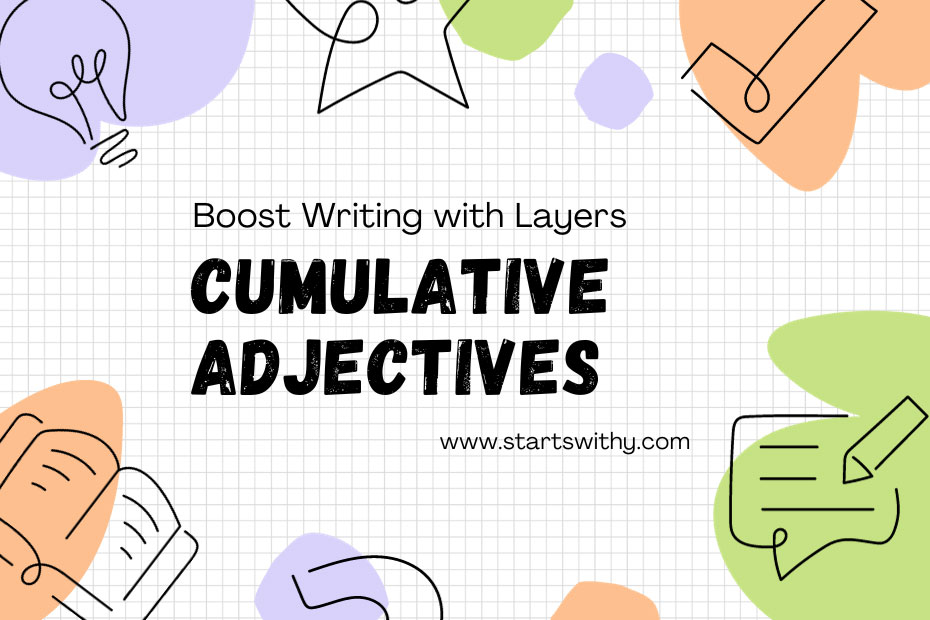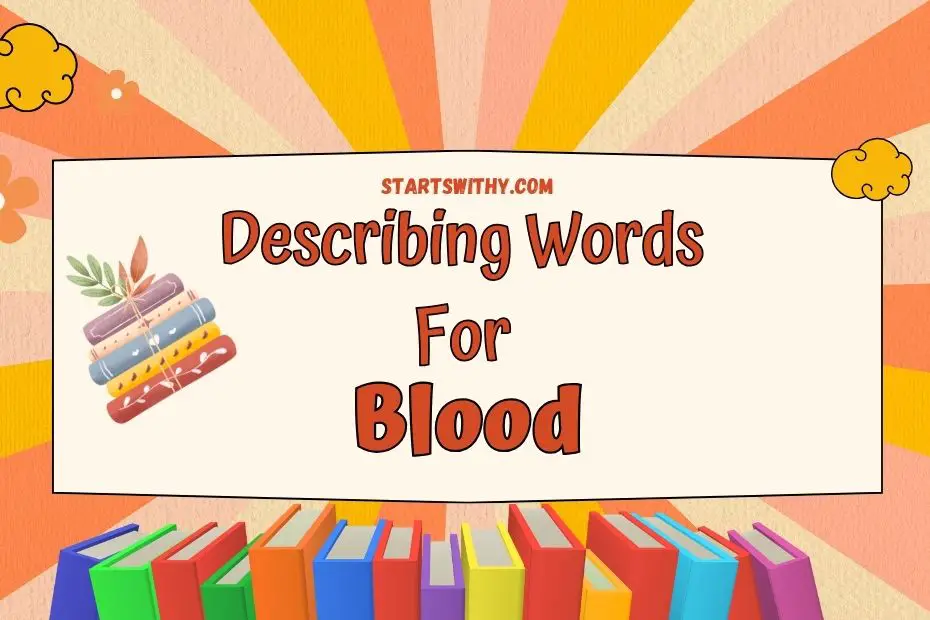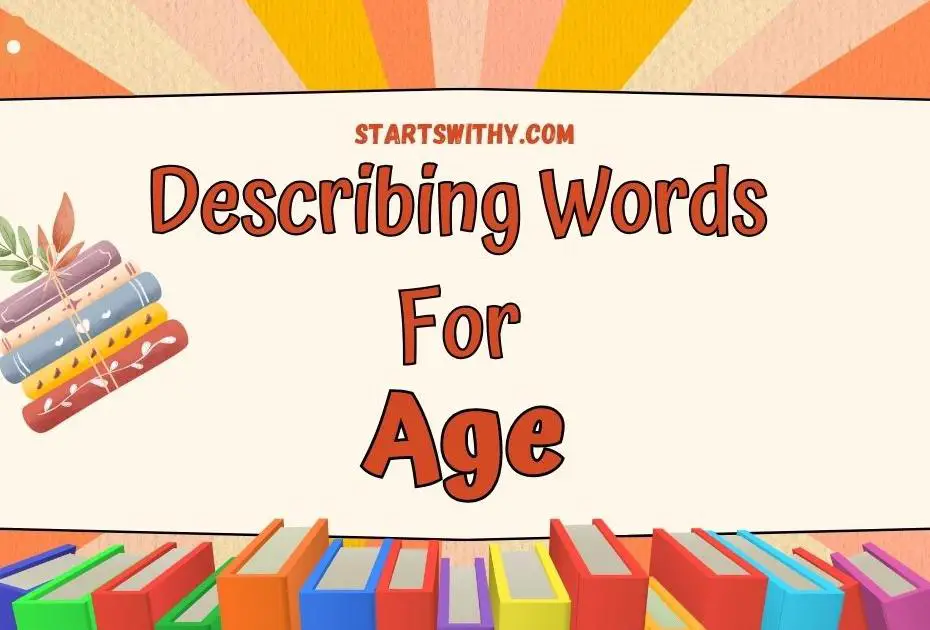Crafting vivid images with words is an art, and cumulative adjectives are my paintbrushes. They layer descriptions, adding depth and clarity to writing, turning a simple narrative into a rich tapestry of information.
Ever read a sentence so descriptive you could almost touch the scene? That’s the power of cumulative adjectives at work. They’re the unsung heroes that give sentences their texture and readers their vivid imaginations.
I’ll guide you through the nuances of stacking adjectives correctly, ensuring your writing is not just informative, but also engaging and memorable. Let’s dive into the art of description and master the use of cumulative adjectives together.
What are Cumulative Adjectives?
When I think about painting pictures with words, cumulative adjectives are my colors and brushes. They’re a chain of descriptors that don’t need commas because they build upon each other in a specific order. They’re a vivid way to give readers a more precise image in their minds. Essentially, they’re like those multi-layered, multi-hued coats of paint that bring a canvas to life.
To help kindergarteners grasp this concept, I like to think of cumulative adjectives as a train of colorful cars, each linked to the next. Each “car” or adjective adds its bit of information, and together, they chug along to describe a noun in detail. Here’s how it works in the world of writing:
- Order Matters: The order of cumulative adjectives is not random. Sensory adjectives often come first, followed by size, shape, age, color, origin, material, and purpose. It’s the natural way the English language structures descriptions, and it can feel jarring if we mix it up.
- No Need for Commas: Unlike coordinate adjectives where commas are necessary, cumulative adjectives stick together in a string without commas because each one qualifies the proceeding adjective and noun combination.
- Flow and Rhythm: They provide a natural rhythm to sentences, enhancing readability. This order also plays nicely with how we naturally process descriptions, making the text easier for young minds to follow.
As I guide readers through stories or examples, these neatly stacked adjectives ensure that every detail I add has a clear place and purpose. It’s about layering the information so that it feels easy to understand and remember. This technique is advantageous when teachers are trying to instill an expansive vocabulary in kids. By using cumulative adjectives, I can introduce new words while reinforcing their descriptive capabilities and adding texture to the narratives I share.
The Power of Layering Descriptions
When I teach vocabulary to young learners, I’ve observed something fascinating: the more vivid and layered a description is, the better children comprehend and remember the words. That’s where cumulative adjectives come into play. They’re not just a string of words; they’re the stepping stones that lead to a richer language experience for kids.
Imagine a child’s mind as a blank canvas. Every new adjective is a stroke of color, and with cumulative adjectives, I can paint a vivid picture that engages and educates simultaneously. By starting with the most immediate sensory adjective and layering up through size, shape, age, color, origin, material, and purpose, the image becomes clearer and more nuanced. It’s like reading a story in high definition.
In practical classroom settings, I use simple examples:
- A soft, small, round, old, brown, leather, reading chair.
- A bright, little, square, new, red, plastic, toy car.
These aren’t just lists of attributes; they’re concise narratives about each object. And when children hear them, they don’t just see a chair or a car; they see the very chair that they snuggle into for storytime or the car they race across the kitchen floor.
The strategic use of cumulative adjectives also supports language development. Children learn to classify and identify nuances in the world around them, which in turn, bolsters their descriptive and communicative skills. And in this context, repetition is an ally. Going over the same structured and layered sentences reinforces memory and aids in the reinforcement of these new terms. I aim to provide the young minds with ample opportunities to hear, see, and ultimately use these descriptive clusters in their everyday language.
While cumulative adjectives enhance written communication, they’re just as powerful when used in everyday dialogue. I encourage educators to weave them into daily conversations, thereby integrating enriched vocabulary into the natural linguistic fabric of a child’s world. This ongoing exposure is key to fostering both language retention and enthusiasm for learning new words.
Using Cumulative Adjectives Effectively
In my experience, getting cumulative adjectives right is key in stimulating a young learner’s curiosity and capacity for language acquisition. The key lies in their strategic placement and the relationship each adjective has to the noun it modifies. When used thoughtfully, they paint a picture that is both comprehensive and appealing to a child’s imagination.
To introduce cumulative adjectives to preschoolers, I start with simple, commonly encountered words. It’s pivotal to build from the familiar to the new, ensuring a solid foundation for understanding how these descriptive words function together. Here’s a method I’ve honed over the years:
- Begin with a basic adjective-noun pair, such as “red ball”.
- Gradually add adjectives, possibly expanding to “big, red ball” and then to “big, shiny, red ball”.
- As we layer these adjectives, I pause to discuss each word’s meaning and its contribution to the overall description.
Digging deeper, I choose adjectives that vary in type but work harmoniously together. Size, shape, age, color, material – all are different categories of descriptors that can combine to form a rich tapestry of language. By mixing these categories, children learn to appreciate the subtlety and complexity of descriptive phrases.
I prioritize active engagement and repetition during lessons to help children cement these concepts. I’ll often have them:
- Draw what they visualize from a series of cumulative adjectives.
- Collaborate in group activities to create their descriptions of objects around the classroom.
- Share stories using their own cumulative adjective constructions.
Active learning approaches like these bolster a child’s ability to integrate new vocabulary and use it creatively. Moreover, this engagement has the secondary effect of developing critical thinking skills, as the children learn to select the most effective descriptors for any given situation.
As my young learners become more comfortable with cumulative adjectives, I incorporate them into more complex activities. For instance, I might use storytelling sessions where children have to identify and create layers of adjectives as we build tales together. This bridges the gap between rote learning and applied language skills, a vital leap in the educational journey.
Through these methods, not only do children acquire a versatile vocabulary, but they also gain the confidence to experiment and express themselves with greater clarity and color. My goal is always to instill a joy for language that will continue to grow with them.
Avoiding Common Mistakes
When integrating cumulative adjectives into early childhood education, it’s crucial to be mindful of potential pitfalls. As a seasoned writer who has honed the craft of guiding educators, I’m here to help you sidestep common errors that could confuse young learners.
First and foremost, context is king. Ensure that the adjectives used are relevant and add meaningful layers to the description. Bombarding children with unnecessary or out-of-place adjectives not only muddles the sentence but could also hinder their comprehension.
Overcomplicating sentences is a mistake that’s easy to make. While we aim for richer language, the sentence structure should remain simple for preschoolers. Steer clear of piling up adjectives to the point where the noun gets lost. This could overwhelm the kids and defeat the purpose of the lesson.
Another aspect to watch is consistency in teaching. Introducing similar types of cumulative adjectives in various sentences reinforces understanding. Switching types too quickly might not give children the ample practice they need to grasp the concept thoroughly.
Remember, repetition is beneficial—but only to a certain degree. Be cautious not to overdo it. Repetition helps cement learning but repeating the same adjectives or sentence patterns excessively may lead to boredom or a lack of engagement.
Moreover, pay attention to the order of adjectives. In English, adjectives have a natural order—opinion, size, age, shape, color, origin, material, purpose—before the noun. This isn’t just a stylistic choice; it’s how proficient speakers naturally structure their thoughts. When teaching, maintain this order to provide children with an accurate template.
Lastly, practice active listening and encourage children to ask questions if they’re unsure about the adjectives’ function or order. This not only clarifies their doubts but also promotes a dialogue-rich environment that stimulates cognitive development.
Examples of Cumulative Adjectives in Writing
When I’m crafting sentences for my lessons, I often use cumulative adjectives to build a vivid image in my students’ minds. For instance, I might describe a character in our storybook as a “little old wooden toy soldier.” With these three adjectives layered together, kids not only imagine a soldier but also see his size, age, and material, which captivates their interest and helps them remember the vocabulary.
To make the concept clearer for my fellow educators, here are a few examples:
- A bright, cheery morning sun greeted us as we started our day.
- The class found a stray, frightened little kitten hiding behind the school bins.
- We read about a tall, ancient pine tree that stood proudly on the mountain top.
Each phrase tells us something more about the noun, creating a more detailed picture. But clarity is key; if you add too many adjectives, you risk losing the child’s attention or making it difficult for them to process the information. That’s why I focus on relevance and simplicity.
In my lesson plans, I like using exercises that let children practice identifying and ordering cumulative adjectives. We’ll have a sorting game where phrases like “an adorable, fluffy, young rabbit” are mixed up, and kids need to arrange them correctly. This hands-on activity boosts their understanding of how descriptions work together to convey a richer meaning.
We should also encourage children to create their own examples. I’ve found that prompting them with a noun and one adjective inspires them to add more, growing their descriptions organically. For example, if I say “colorful balloon,” a child might add “big” to form “big, colorful balloon.”
Understanding and using cumulative adjectives isn’t just about language development; it’s about helping kids engage with the world around them. By layering descriptions, they learn to express what they see and feel more precisely, which is an essential step in their literacy journey.
Conclusion
Mastering cumulative adjectives can elevate your writing and enhance communication, especially for our young learners. It’s about striking the right balance between vivid description and readability. By incorporating the suggested exercises into your teaching routine, you’re setting the stage for children to not only grasp the concept but to apply it creatively. Remember, it’s through practice and application that the beauty of language truly unfolds. Let’s inspire our kids to paint with words confidently, one adjective at a time.



